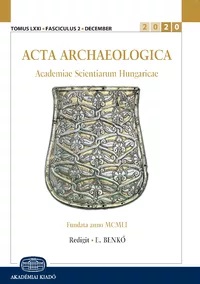Gyula László’s theory of the “two-time conquest of the Magyars” and the archaeology of the Avars
Gyula László’s theory of the “two-time conquest of the Magyars” and the archaeology of the Avars
Author(s): Csanád BálintSubject(s): Archaeology, 6th to 12th Centuries
Published by: Akadémiai Kiadó
Keywords: so-called two-times conquest of the Magyars; archaeology of the Avars; Byzantine and Russian sources; Kama-region; “Uuangariorum marcha”; physical anthropology
Summary/Abstract: Gyula László’s theory, published in 1970, was virtually ignored and received with tacit dismissal by the Hungarian archaeological scholarship and international archaeological community was largely unaware of it. This paper aims to provide clarity for the latter research. Not a single element of the theory was accepted or was acceptable even at the time of its birth: distribution of the late Avar and the Conquest-era sites do not complement each other; István Kniezsa's map is highly discussed and is not suitable for proving that the eighth century Avars were Hungarians; Byzantine sources record the immigration of a military group and not of a people, who later moved on; the “Ugri Bjelii” mentioned in the Russian Primary Chronicle cannot be applicable to this immigration; the so-called of “griffin-tendril” population is about 30 years later as the supposed immigration; there was not a migration from the Káma region in the seventh century) connecting the “Uuangariorum marcha” with the “Onogurs” is highly uncertain; there is no trace of any immigration in the anthropological material of the Avar period.
Journal: Acta Archaeologica Academiae Scientiarum Hungaricae
- Issue Year: 74/2023
- Issue No: 1
- Page Range: 121-141
- Page Count: 21
- Language: English

